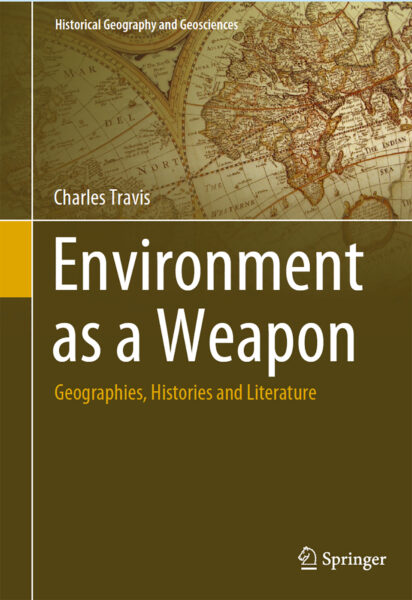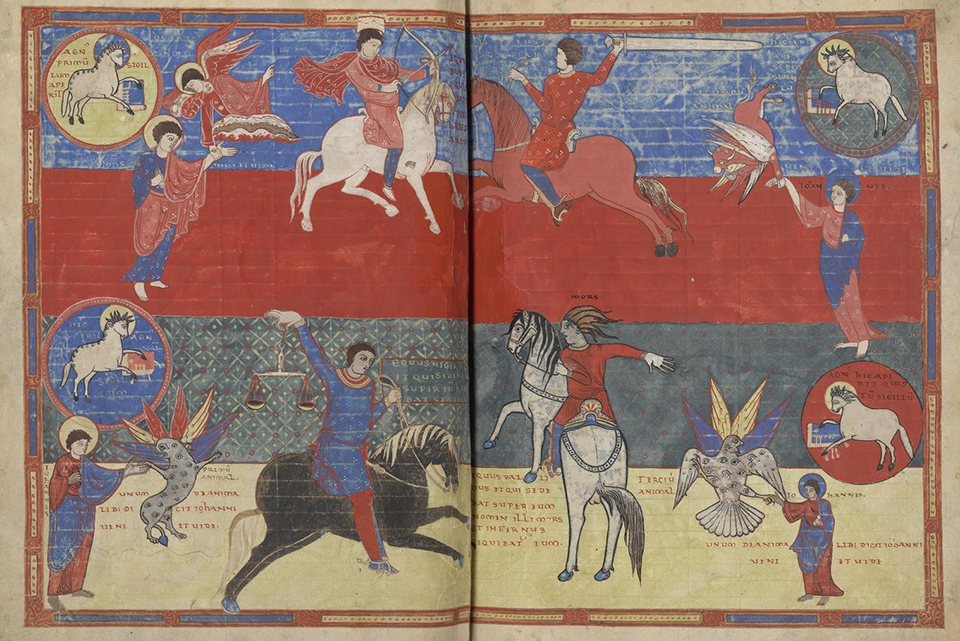War belongs to a handful of crises such as environmental disasters, extreme climatic events, epidemies, and hunger. New book tells the story of the interplay
… the obstacles that made me fail did not come from men; they all came from the elements. In the south, the sea has been my undoing; in the north, the burning of Moscow and the cold of winter. Thus water, air, and fire, all of Nature, nothing but Nature-these have been the enemies of a universal regeneration which Nature herself demanded!
Napoleon Bonaparte, in exile on St. Helena, 1816 (Quoted by Charles Travis)
 Environment as a Weapon
Environment as a Weapon
By Charles Travis
Springer Verlag 2024
The book “Environment as a Weapon” considers how the confluence of war and nature from the time of the Agricultural Revolution (10,000 BCE) to our present day has been represented in works of history, geography, and literature. In the Epic of Gilgamesh, the Torah, Greco-Roman myths, and the New Testament, warfare is a trope commensurate with environmental disasters, extreme climate, and plague.
One of the more pregnant vignettes of this may be found in the motiv of the Four Apocalyptic Horsemen. However, other stories sets the scene for similar horrors. To name but a few, the Táin and Beowulf environments become allies and enemies in the Middle Ages. Somewhat later, the equestrian steppe is considered as the foundation of Genghis Khan’s Pax Mongolica, and is chronicled in The Secret History of the Mongols and The Travels of Marco Polo. The West African Griot legend of Sundiata and the Little Ice Age wreck of the Spanish Armada in 1588 speak to oceanic and atmospheric dimensions of warfare. Further up in history, the motiv become even more pronounced. Thus, during the American Revolution political pamphlets, poetry, diaries and weather logs reflect the severe weather and terrain deployed by George Washington’s early campaigns in the War of Independence. Napoleon’s midwifing of Total War is captured in Mary Shelley’s Frankenstein, Leo Tolstoy’s War and Peace, and Charles Minard’s carto-graph, Carte Figurative of the disastrous 1812 French invasion of Russia. The U.S. Civil War and the industrial-organic assemblages of its battles, arguably the first Anthropocene War, are parsed by the clarifying poetry of Emily Dickinson. Geopolitik and geo-hazards of flood and fire feature in the Global War works of Samuel Beckett, Kurt Vonnegut, and James Dickey. The literature of Vietnamese and American war combat veterans reveals how North Vietnam’s Environmental Military Complex stalled the American Military Industrial Complex in the jungles, and R&R districts of southwestern Asia. Finally, the sci-fi of H.G. Wells’ World Set Free and David Mitchell’s Cloud-Atlas frame Oppenheimer’s sub-atomic deployments at Hiroshima and Nagasaki, James Lovelock’s “Gaia,” and U.S. military discourses situating global warming as a national security threat to America.
Indeed, Environment as a Weapon ironically resonates with U.N. Secretary General António Guterres proclamation that “Seventy-five years ago, when the world emerged from a series of cataclysmic events: two successive world wars, genocide, a devastating influenza pandemic, our founders gathered in San Francisco promising to save succeeding generations from the scourge of war.” And yet, there we are once again, witnessing the environmental horrors which followed in the wake of the destruction of the Kakhovske Dam.
Thus, a holistic approach to studying and mitigating the human and environmental impacts of warfare would benefit from integrating approaches in the arts, humanities, and sciences, to better understand how the historical geographies of the Earth’s planetary systems have been perceived and deployed. Seemingly in the twenty-first century, these systems have emerged as agents of warfare, with the lithosphere, hydrosphere, cryosphere, biosphere, and atmosphere transforming into the Earth’s arsenals to combat anthropogenic climate change. Geographers, historians, and scholars in environmental studies, climate change, literature, and military studies, as well as the broader environmental humanities will find this book of interest as humanity grapples with the wicked and existential question of global warming. Medieval historians of warfare may enjoy the geographer battling with Beowulf and the Táin Bó Cúailnge.
About the Author:
Charles Bartlett Travis IV, Professor at University of Texas-Arlington, Arlington, USA
Featured Photo:
Four horsemen in the Apocalypse of St Sever Beatus from the 11th century. Source: Bnf/wikipedia/open domain
